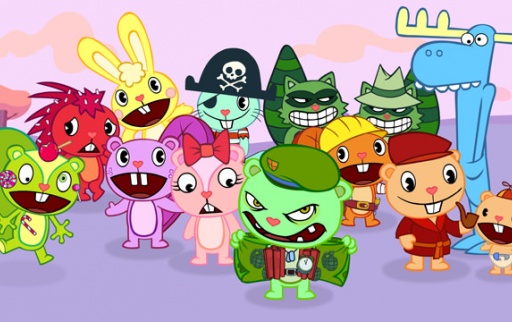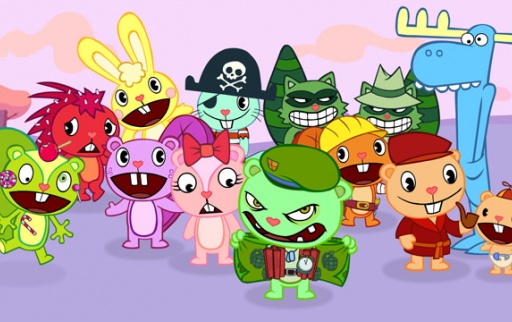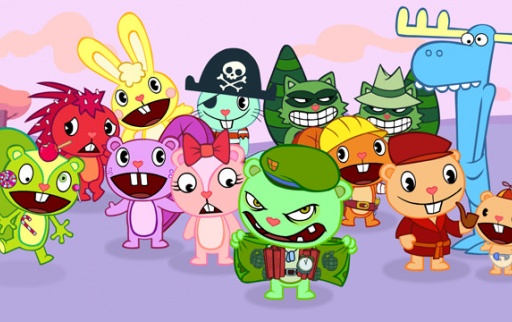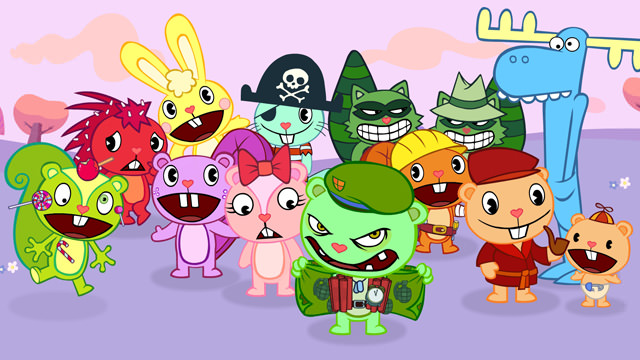

I've had the great pleasure of composing music for the Happy Tree Friends for awhile now - the first episode that I worked on was in 2005. If you're keeping score at home, it was #49, "Stealing the Spotlight". Since that first episode, I've gone on to compose the music for the TV season, False Alarm!, the Ka-Pow! episodes and most of the new episodes that have been released via the internet. I thought I'd use this space to explain a little bit about how approach composing the music for the Happy Tree Friends, and perhaps answer any questions about the process.
I'd be remiss if I didn't thank Kenn Navarro and Jim Lively, who never fail to impress me with their insight and humor.
Creating the Music
When I create music for the Happy Tree Friends, I take my inspiration from the sugary-sweet design and bright cheery coloring of the characters. To me, this approach gives greater impact to the hard hitting sound design and extreme (and extremely funny!) shenanigans that the characters get into. I feel like the syrupy singable melodies allow the sound design to have greater impact and in turn, more humor. Basically, I try to create really sweet sounding music to contrast the painfully realistic sound design impressively created by Jim Lively.
I try to keep in mind that the music has to serve a bunch of purposes. Most of the time, I need to make sure I'm helping tell the story. Sometimes I want to accentuate the action and I try to add more impact to what's happening with musical jolts and stingers, for instance, when something falls out of the sky and one of the characters gets smashed to bit. I'll do this sort of thing especially toward the end of the episode when really bad stuff is happening. On the other hand, sometimes I do exactly the opposite - sometimes I want the music to be unassumingly light and happy, to set up a surprise hit - something that the character (or you, the audience) doesn't know is coming. And sometimes, the music just needs to sort of stay out of the way.
I like to play around with the "voice" of the music. I ask "does the music know what's happening next"? Sometimes, the music is omniscient and all-knowing, other times, the music is as clueless as Lumpy.
"But How Do You Actually Create the Music for the Happy Tree Friends?"
Here is the general process of creating a finished piece: Usually I have a conversation with Jim Lively about the episode, although sometimes we just talk about the title. And sometimes we talk about audio gear. I really like audio gear, and that conversation can last a pretty long time. Jim knows a lot.
At this point, I burn the animation to a VHS tape, then take it out back to my garage where I keep my Music Maker XT4 and an old RCA black & white TV. I put the video on in front of the "music making machine" and let it watch the episode a couple of times, then it usually makes some pops and whirring noises, then spits out some sheet music. (One time, I put an episode of "Three's Company" in front of the machine - you should have heard what it came up with!) By then, I'm usually pretty tired, so I take a nap, but not before I arrange for my neighbor, Mrs. Picklebottom to record the piece for me on a cassette tape. After my nap, I play the cassette recording over the phone to Jim and Kenn to see what they think. They usually say it's good, but that I should make it better. After my call, I put it in the "Orchestrator 2000", then take another nap. By then I'm usually hungry for some cereal. I usually wait until the next day to turn my music in, since I don't want the guys to think I'm working too fast.
Ok, so none of that was true, except the part about the cereal. I really like cereal. What really happens is that after I talk to Jim, I watch the episode a couple of times. By this time in the process, the episode will already have been animated to the timing of the voice-over session. Usually the visual stuff is mostly done. Sometimes there are some small timing changes.
Dancing About Architecture
While I watch the episode, I'll get a general idea of what the cartoon is about, and I put a temporary piano track together. This is a scaled-down version of the composition that hopefully captures what I'm trying to do - tell the story, stay out of the way, react to the action, etc. After I record this, I send it off to Jim and Kenn for a listen. Thankfully, these guys can "translate" the piano track into orchestra. This is where I can show what I think the music should do. Sometimes I ask Jim or Kenn some questions before I start composing, though I usually find that with this show, it's easier for me to compose something and use that as a starting point to ask questions. It's like it's easier to show them my questions with music, rather than try to explain it in English. English is good for some things (like ordering a milk shake, or calling your dog - though I imagine your dog wouldn't care if you spoke to it in another language), but it isn't very good at trying to explain what music should do. "Talking about music is like dancing about architecture." - Elvis Costello (maybe).



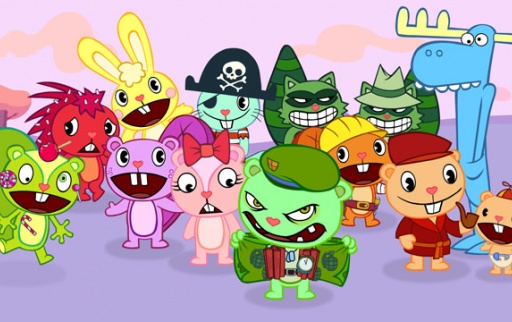
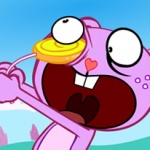 Happy Tree Friends
Happy Tree Friends 